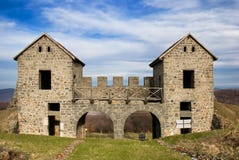Search results
Stock Photo: Gyantse Zongshan Castle. Tibet, China
ID 245688091 © Lizlee | Megapixl.com
Gyantse Zongshan Hero Monument. The three sides of the monument are written in Chinese, Tibetan and English respectively. Zongshan against the British. In 1903, a British armed embassy of nearly 10,000 people entered Tibet from India, through Sikkim and from Yadong, all the way to attack, with the aim of capturing Lhasa. Reached Gyantse on April 11, 1904. Dalai XIII ordered the Tibetan army and people to resist. The Tibetan army fought fiercely with the besieging British army at Zongshan Castle with inferior weapons and suffered heavy losses. On July 7, Zongshan Castle fell. The last Tibetan army guarding Zongshan Castle did not want to be captured, so they all jumped off the cliff. . Gyantse Zongshan Anti-British Site is located on Zongshan Mountain in Gyantse County, Shigatse City, Tibet Autonomous Region. The Anti-British Site of Zongshan Mountain in Gyantse is 360 meters long from east to west and about 80 meters wide from north to south. The Anti-British Site of Zongshan Mountain in Gyantse is a memorial site for the Chinese nation to resist foreign aggression. It preserves the original appearance of the clan government in the feudal serfdom era and has important historical value. In 1961, the Anti-British Site of Zongshan Mountain in Gyantse was listed as the first batch of national key cultural relics protection units by the State Council.
CATEGORIES
EXCLUSIVE
Your image is downloading.
Sharing is not just caring, it's also about giving credit - add this image to your page and give credit to the talented photographer who captured it.:































